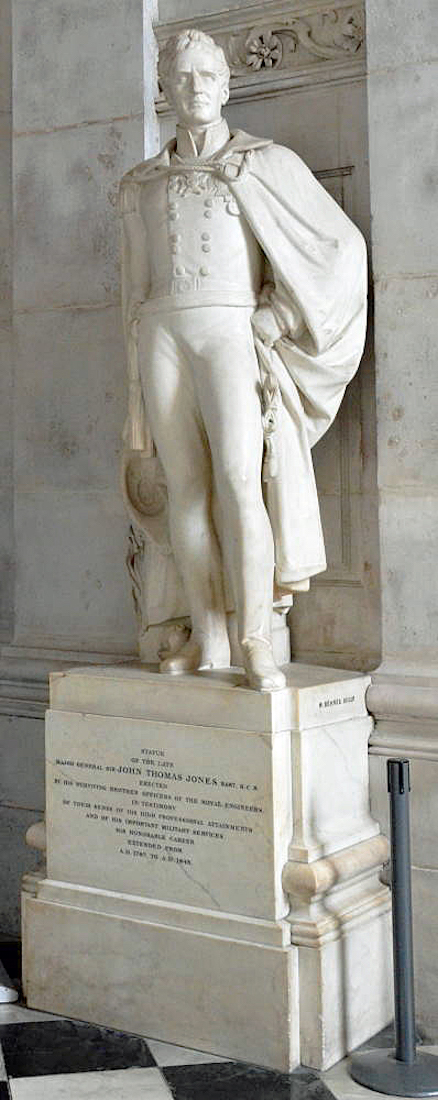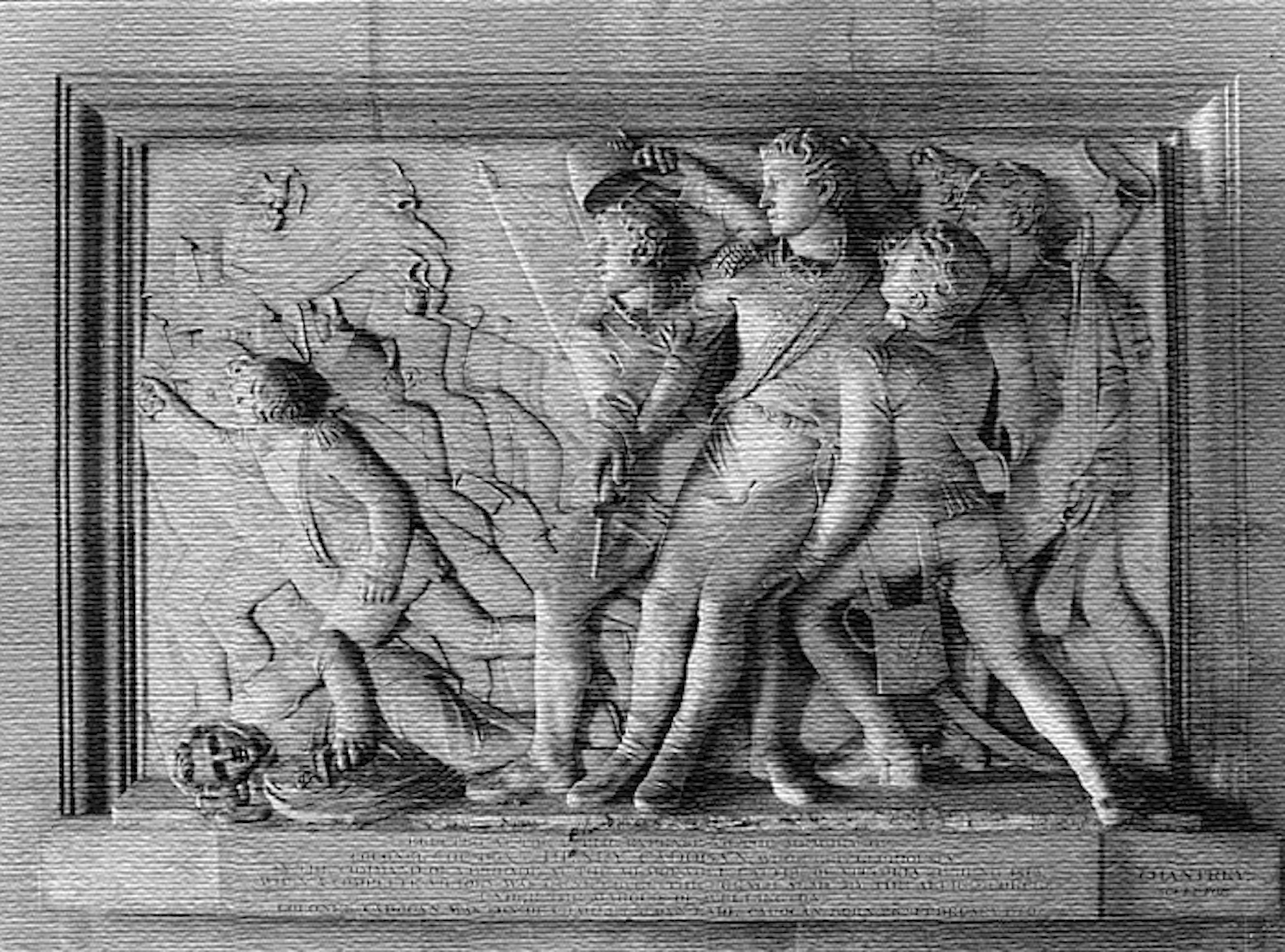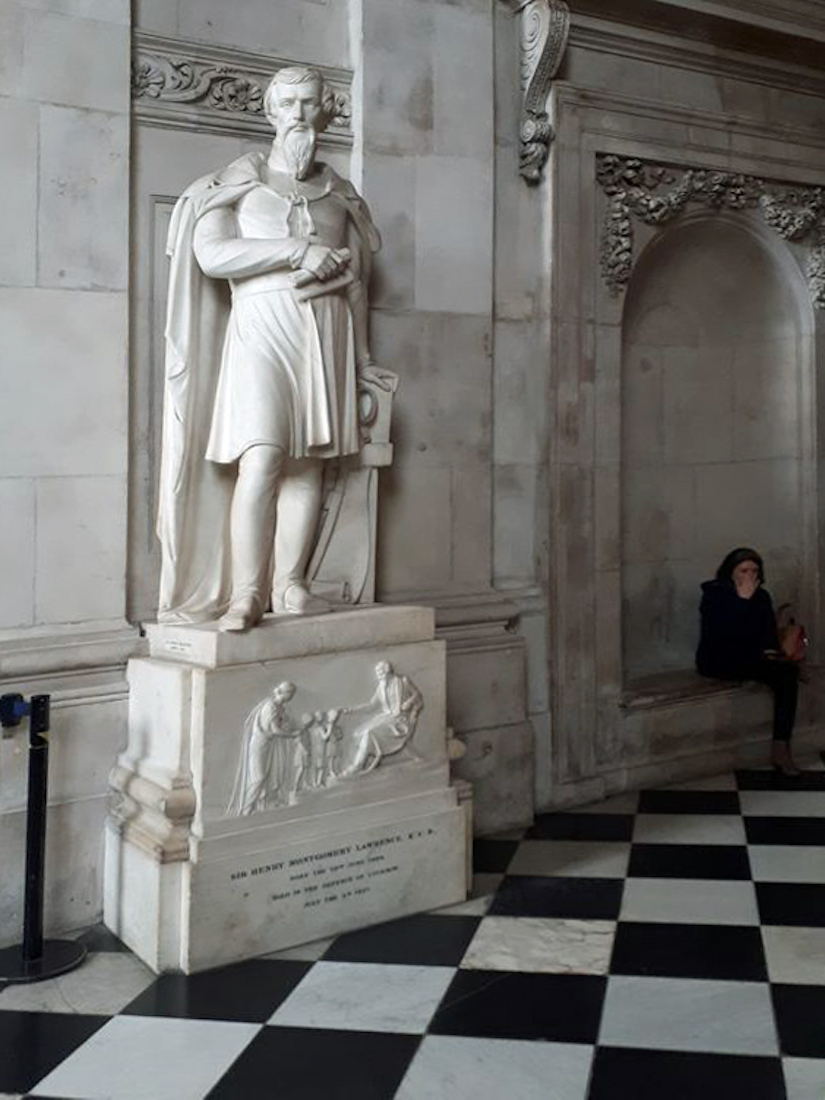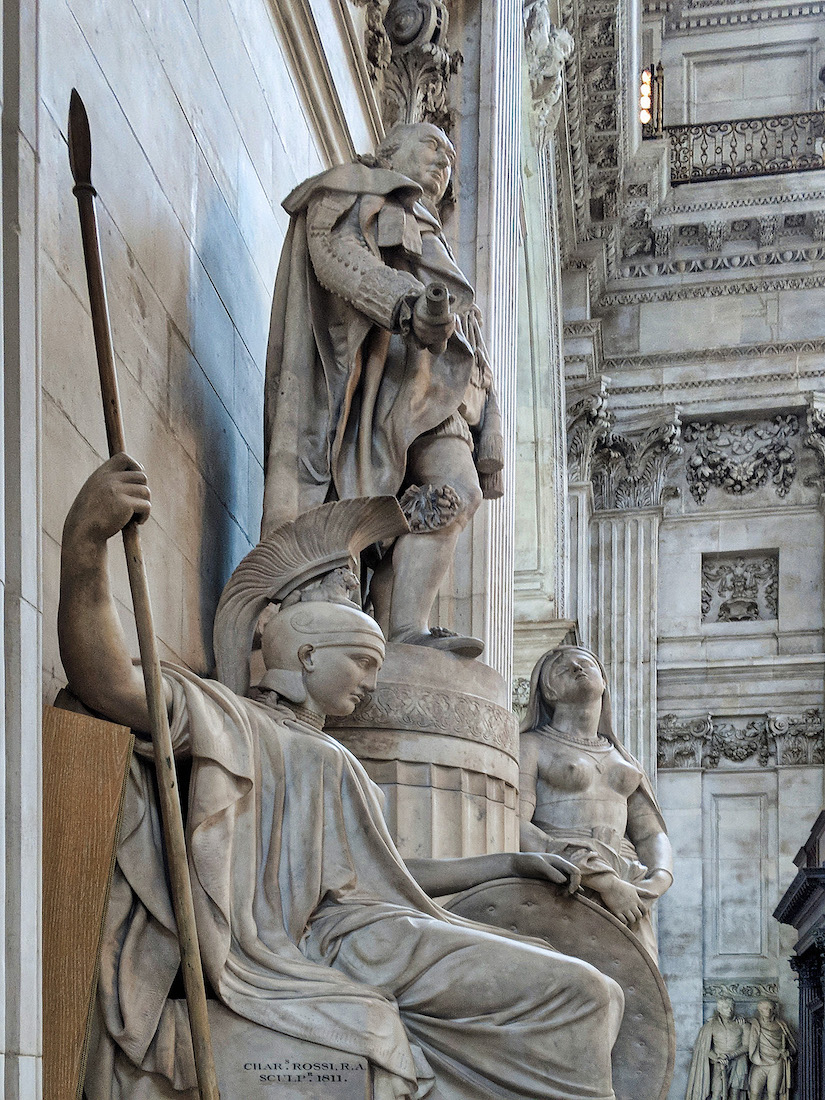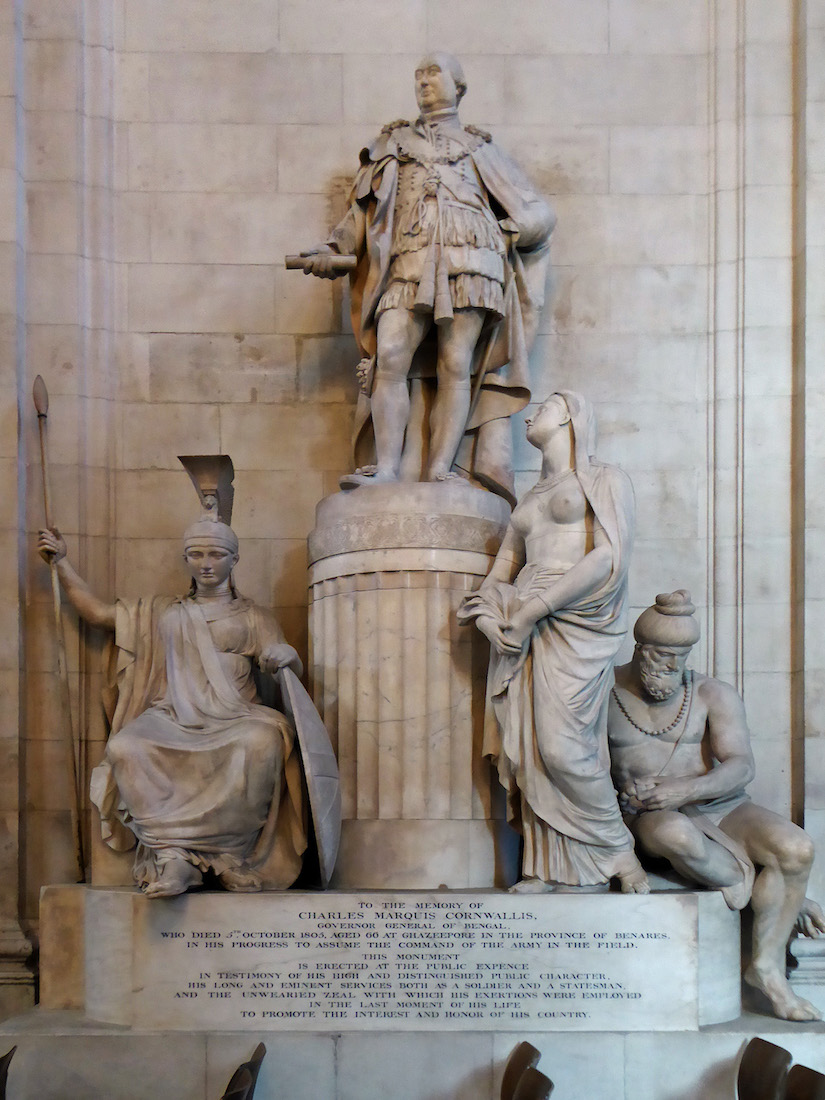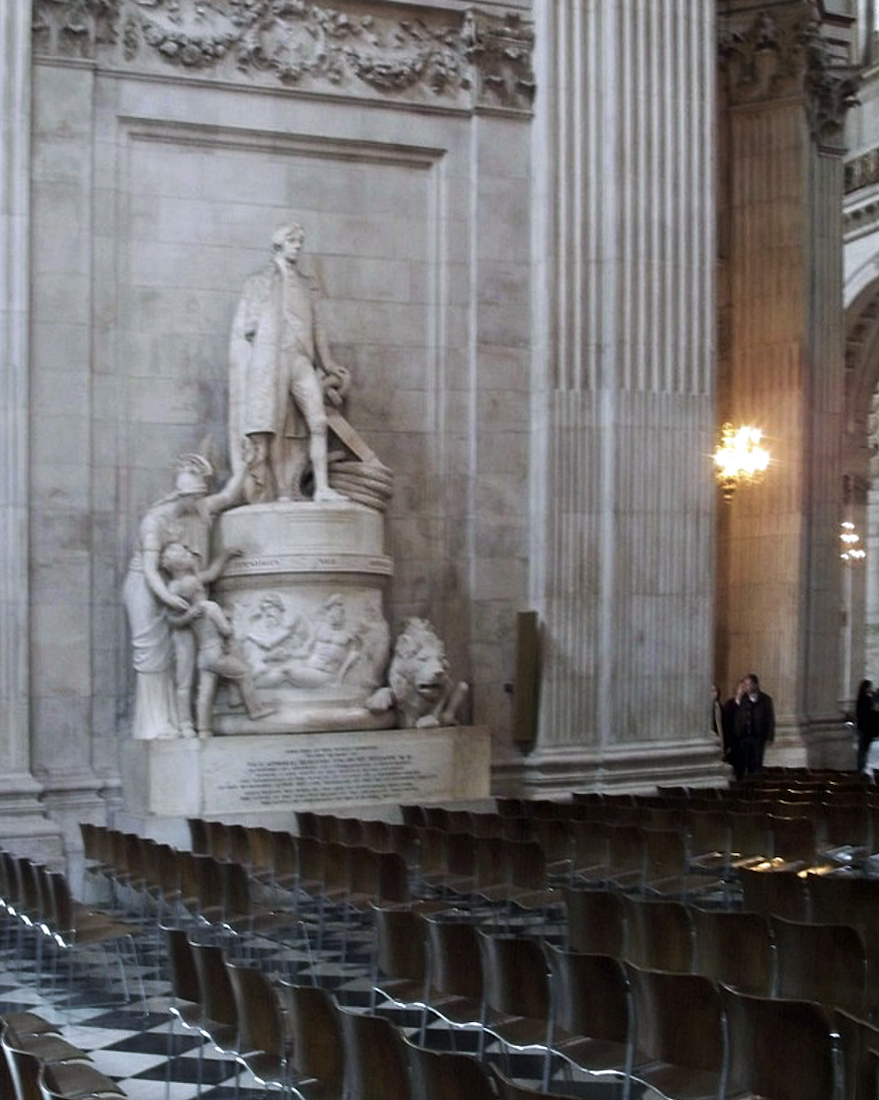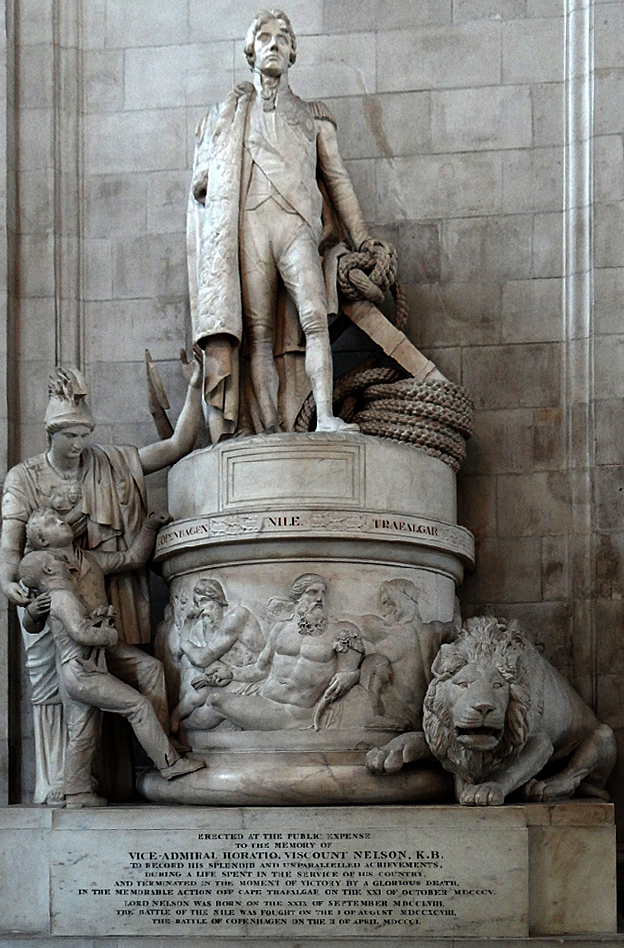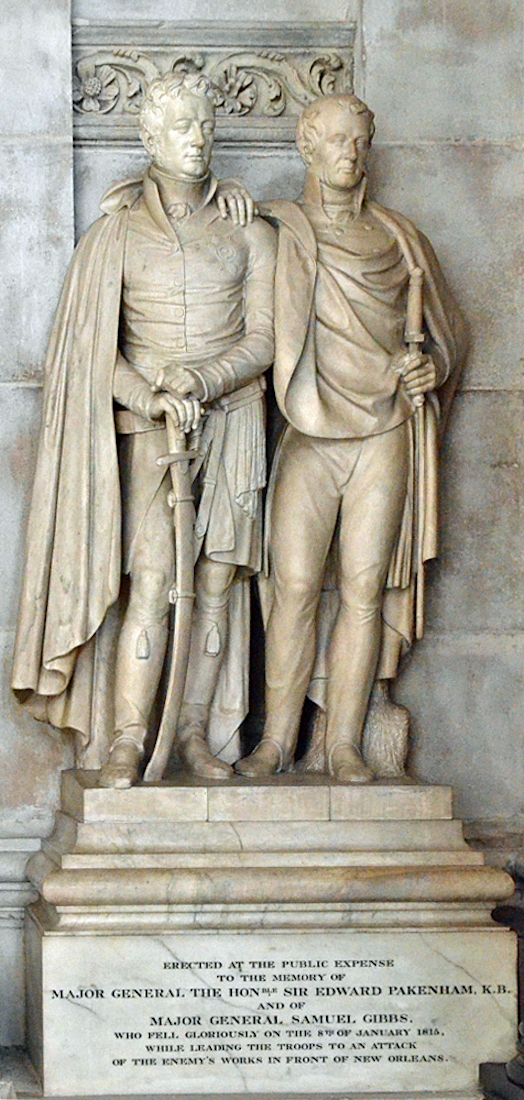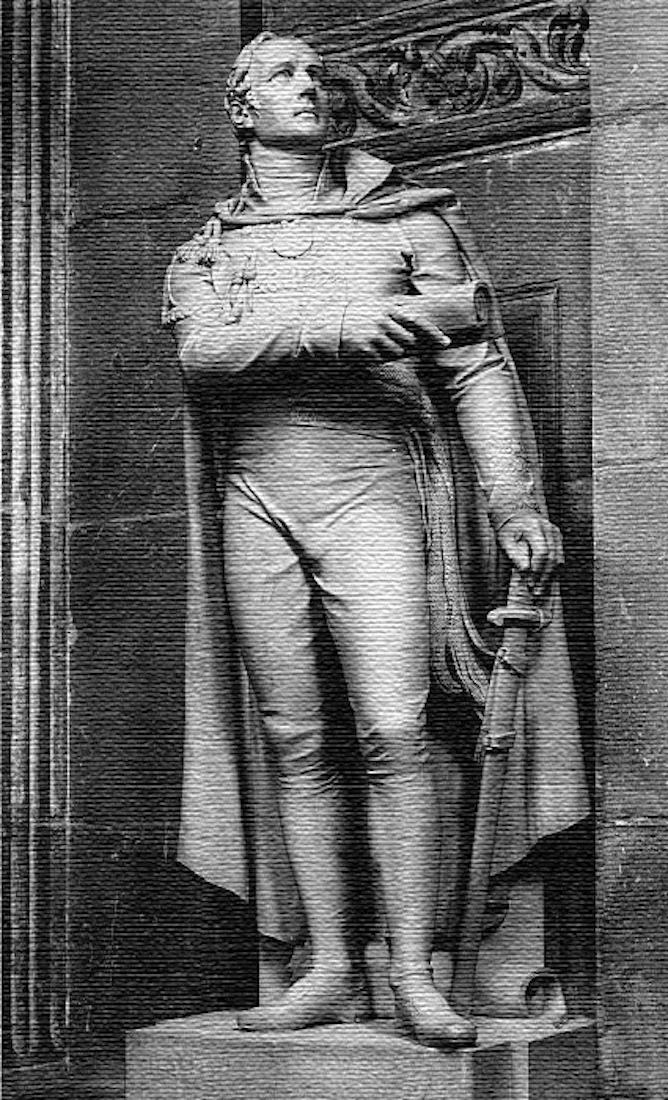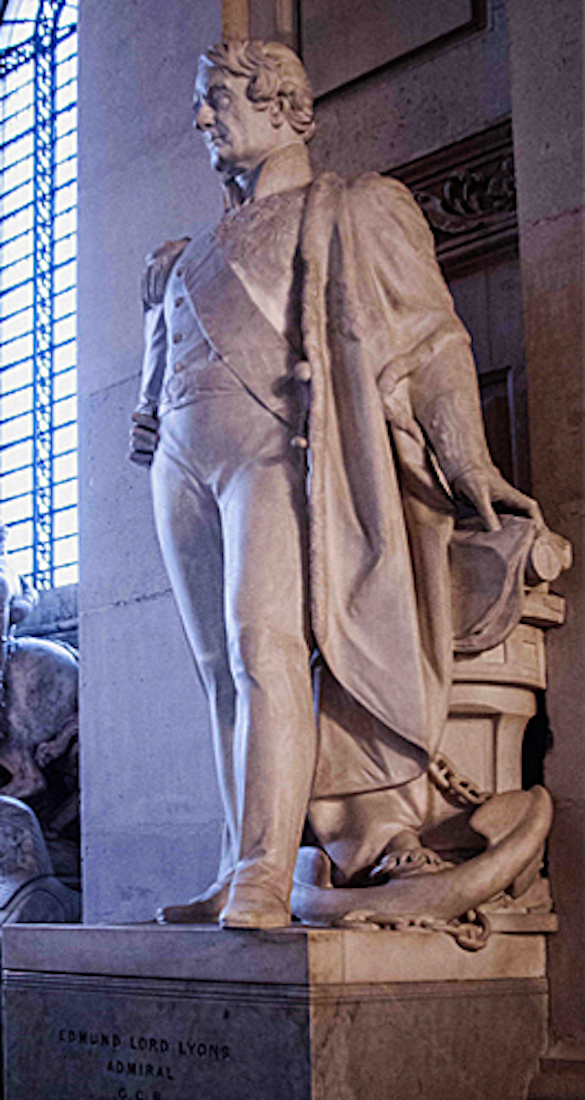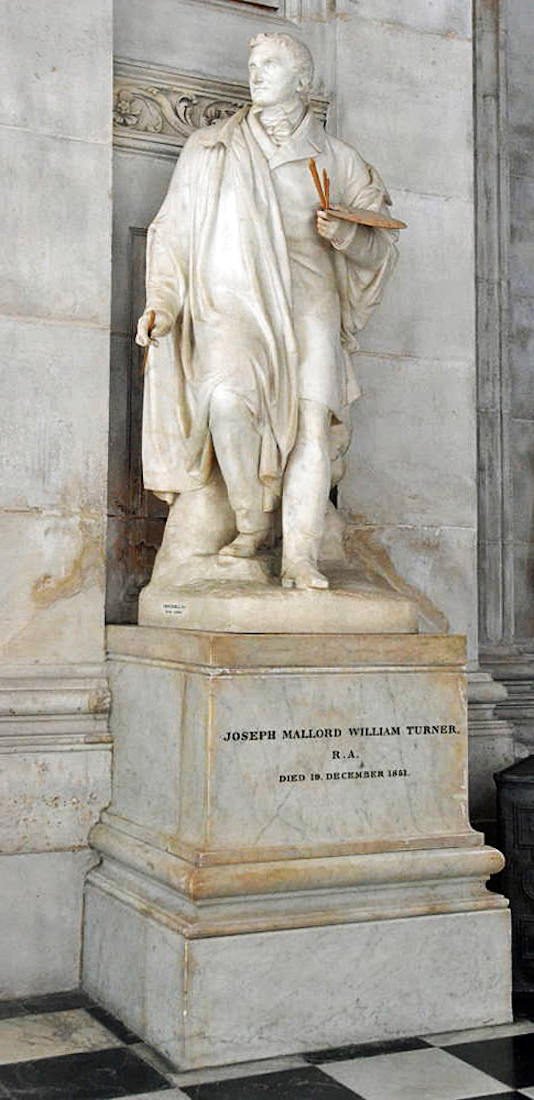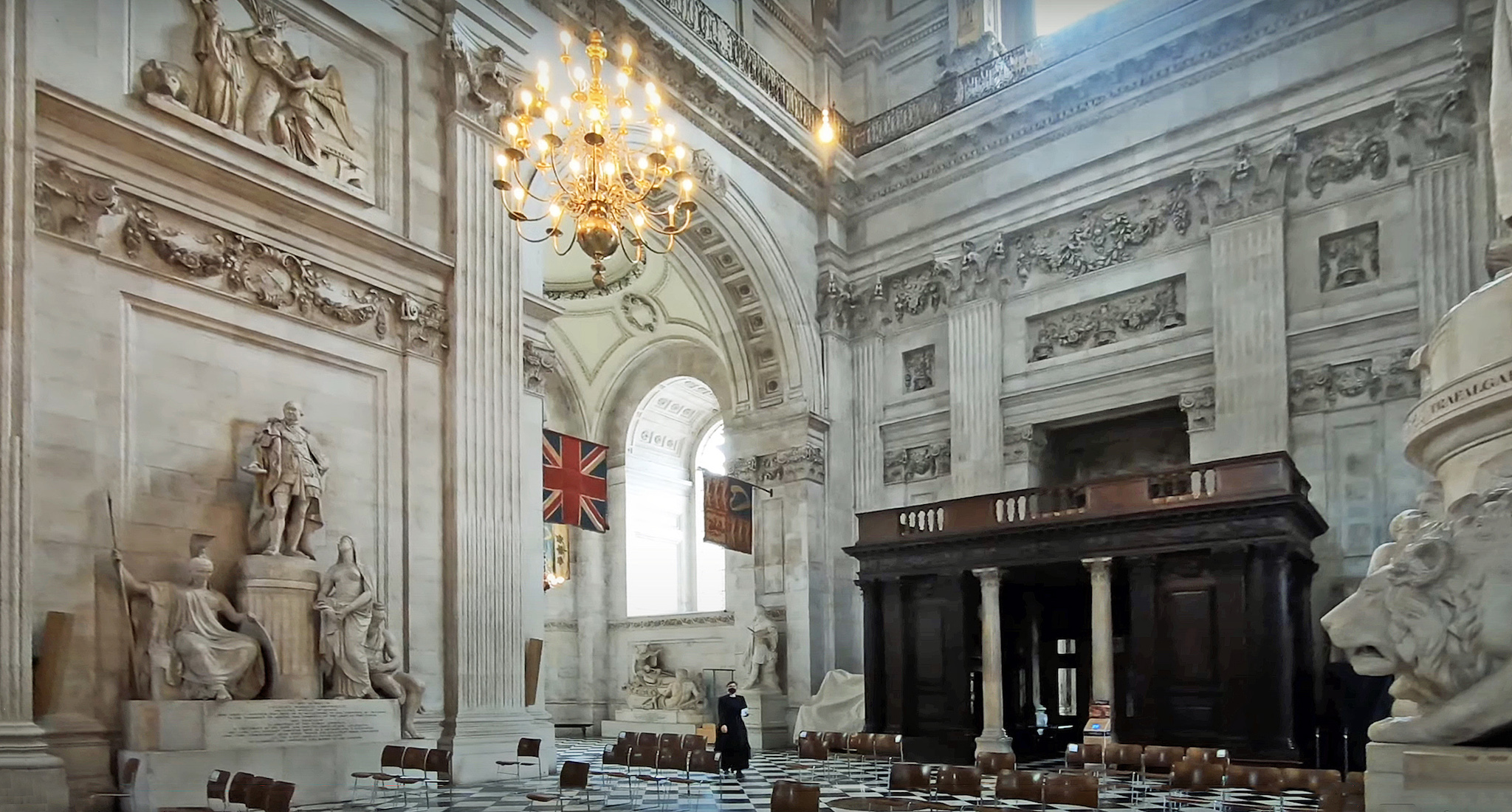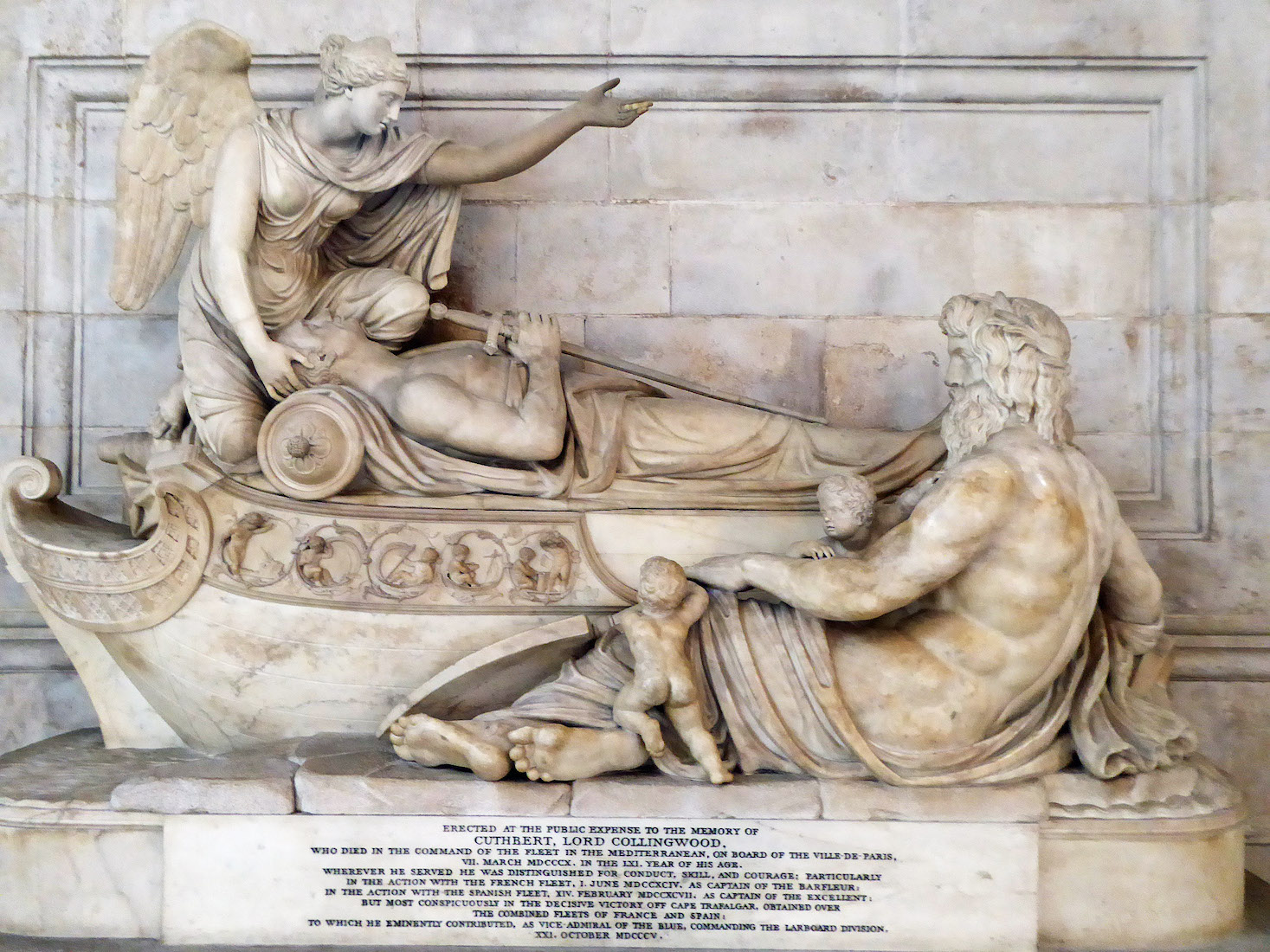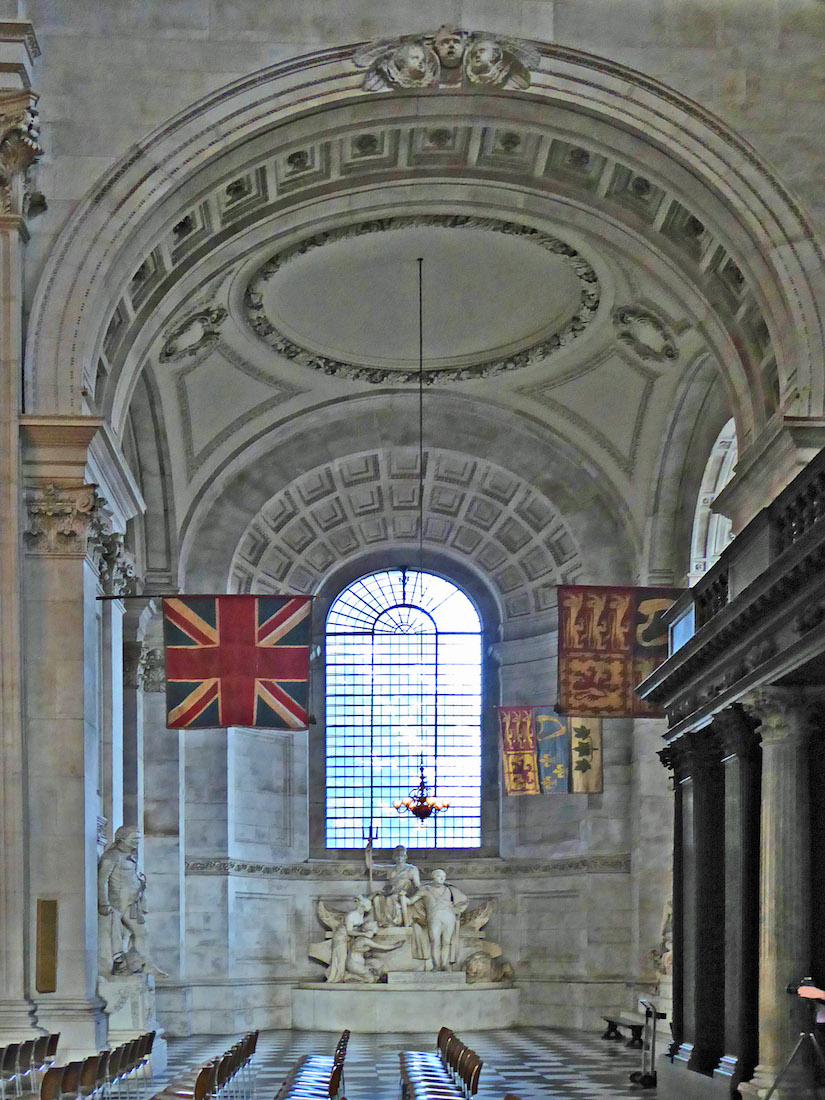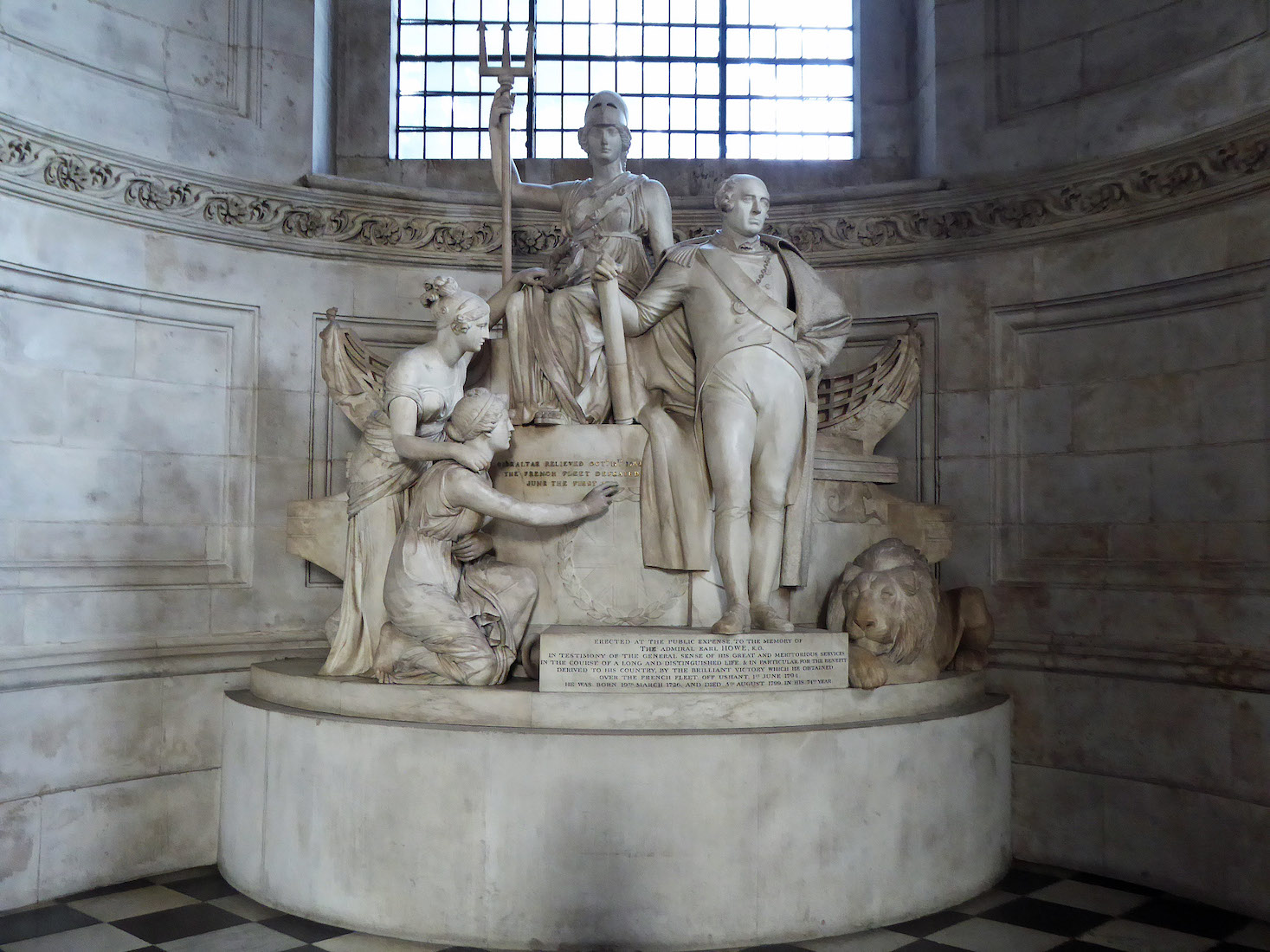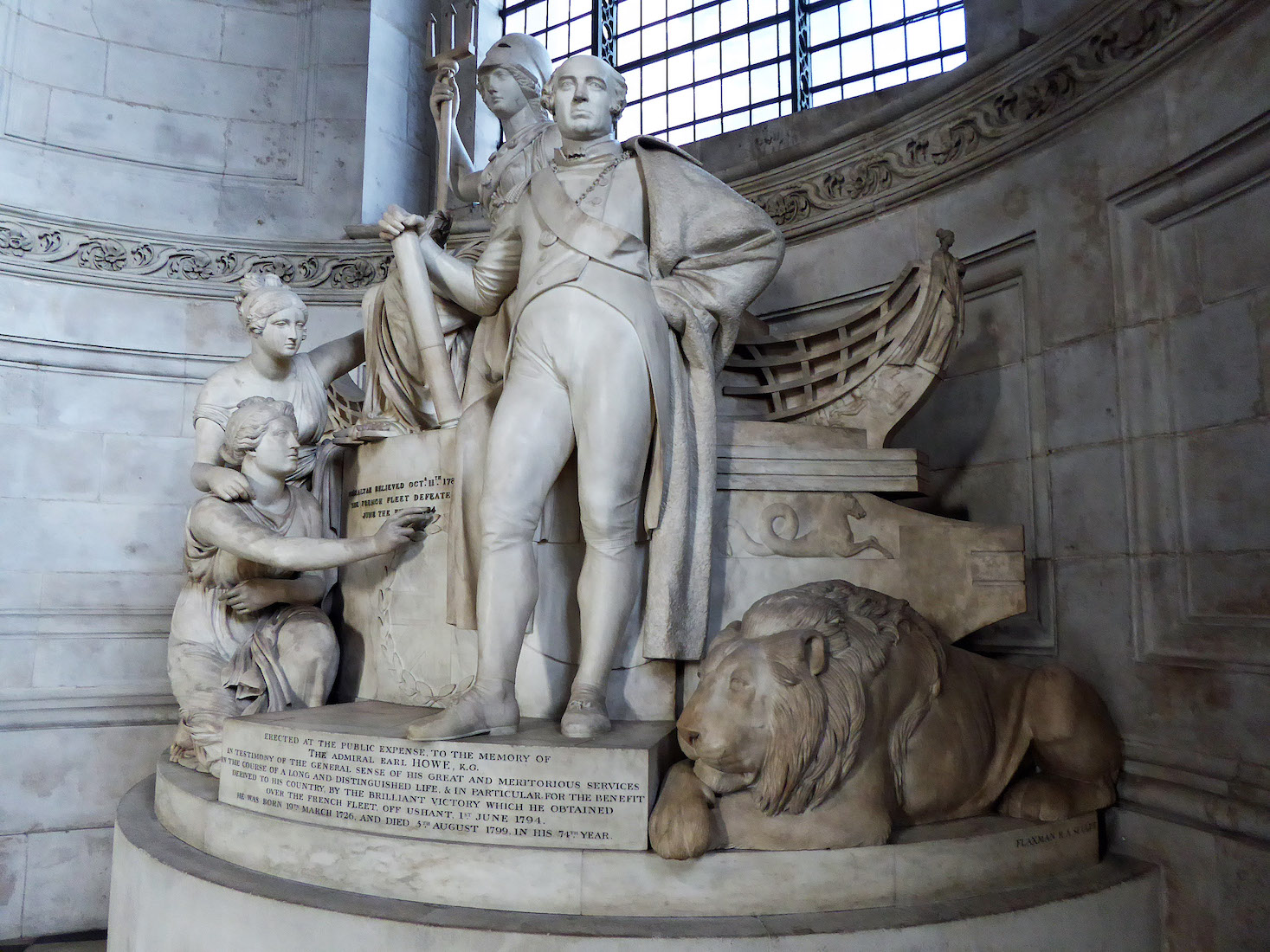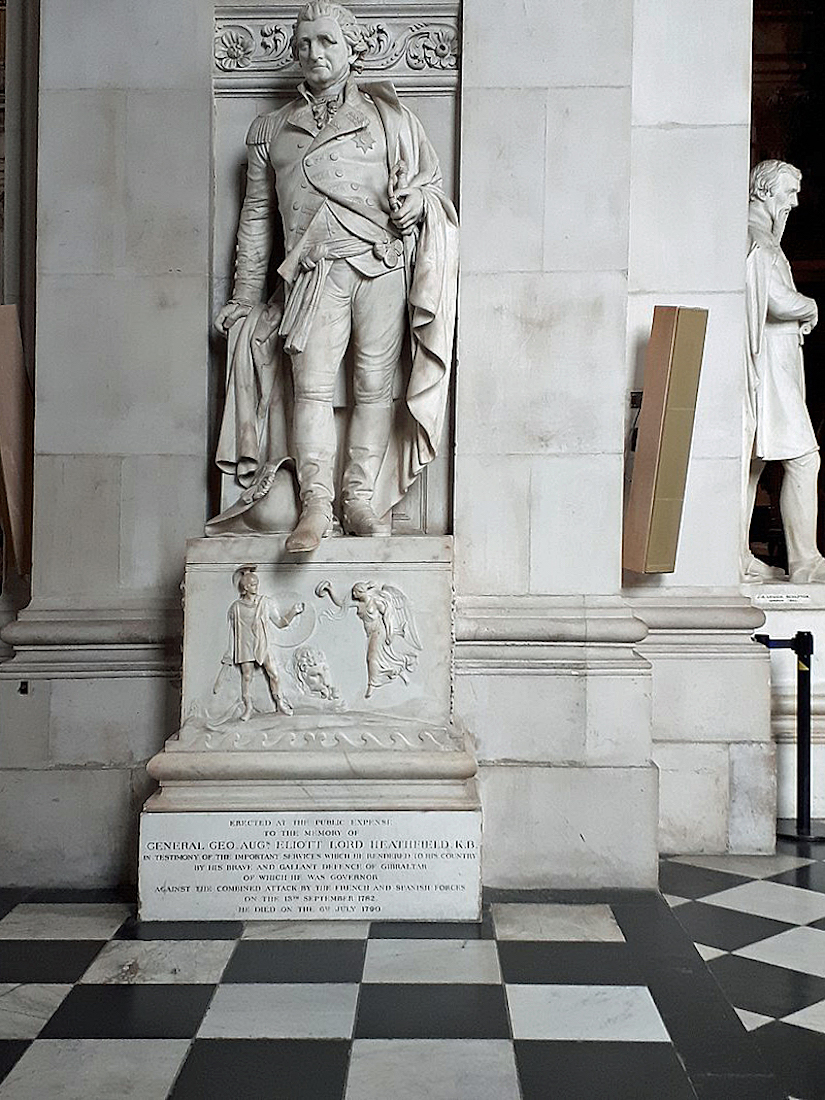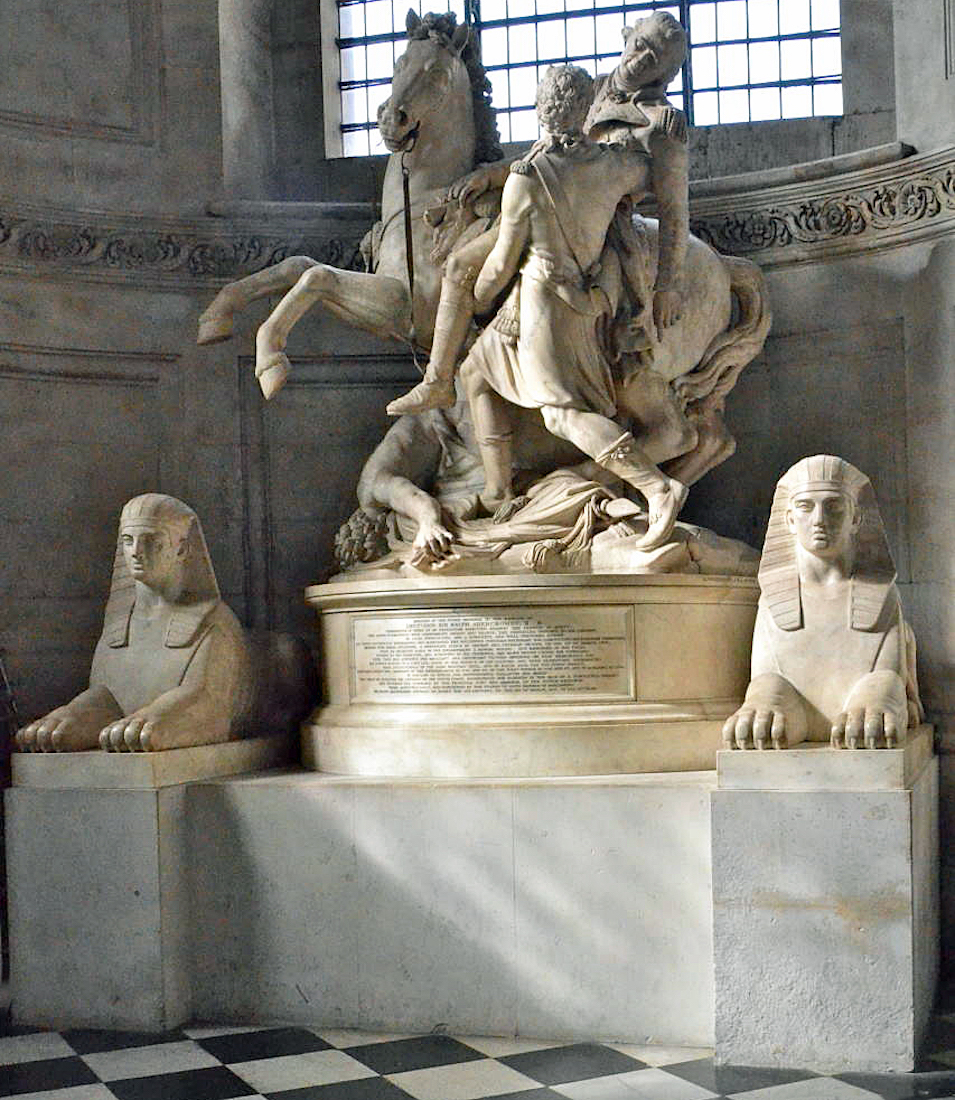SOUTH TRANSEPT
SOUTH TRANSEPT PLAN
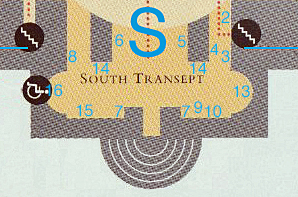
The South transept has a simple plan, but presenting the photographic walk-through has been surprisingly difficult. This is because while there are many photographs of the various monuments displayed here, there are relatively few ‘over-views‘. This is not the part of St Paul’s where people stop and take photos!
S1. LOOKING TOWARDS THE SOUTH TRANSEPT AMT
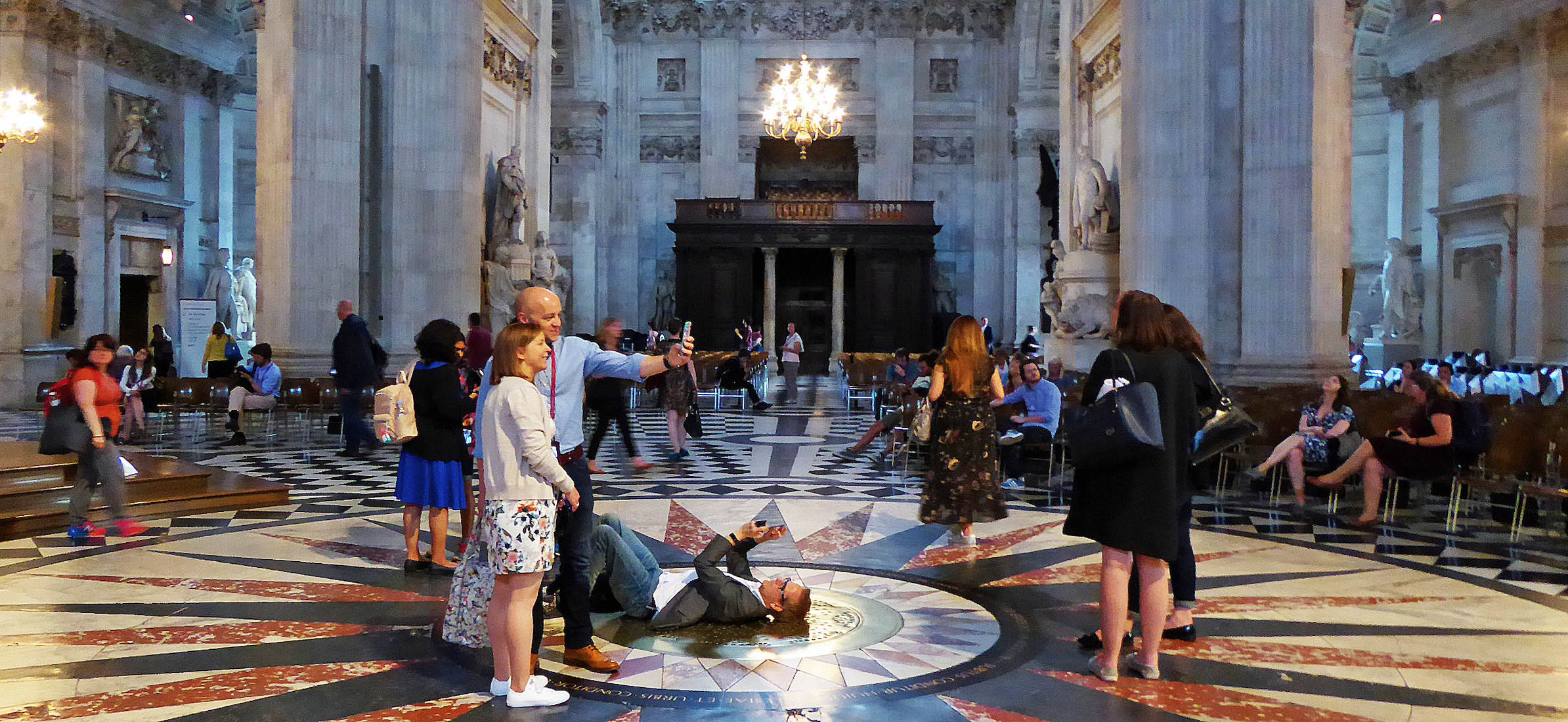
Structurally, the South transept is a mirror image of the North transept which we have already investigated. Standing here near the centre of the crossing, we notice that the South transept consists of three very short aisles (East, central ‘nave’, and West) all leading between the crossing and a wide East – West aisle against the South wall. From this position we can see many of the monuments in the three aisles. Thus, East aisle, East wall: the black Scott monument, crypt door with Ross relief above, Jones statue (and a further monument beyond). East aisle, West wall: no information. Central aisle, East wall: Cornwallis monument. Central aisle West wall: Nelson Monument. There are also a couple of statues tucked in close to the sides of the large South transept door. West aisle, East wall: no information. West aisle, West wall: empty door niche, Hoste statue. We shall investigate these systematically; you might like to return to this page from time to time for reference. A difficulty is that occasionally the Cathedral chooses to relocate the smaller statues, often down to the crypt! We begin with the East aisle. That tourist seems to be having a problem photographing the dome! INDEX
S2. SCOTT AND ROSS MEMORIALS VW IOA
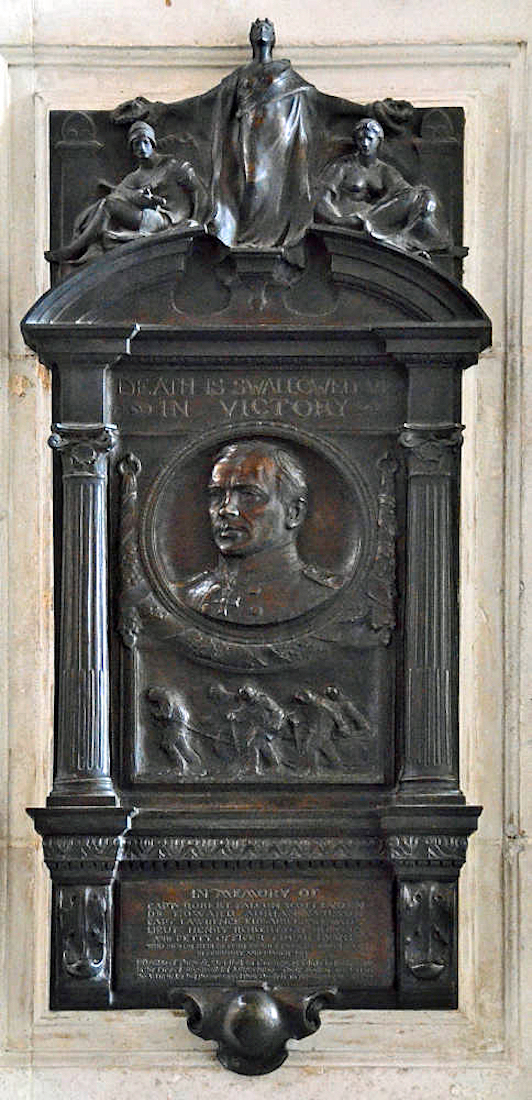
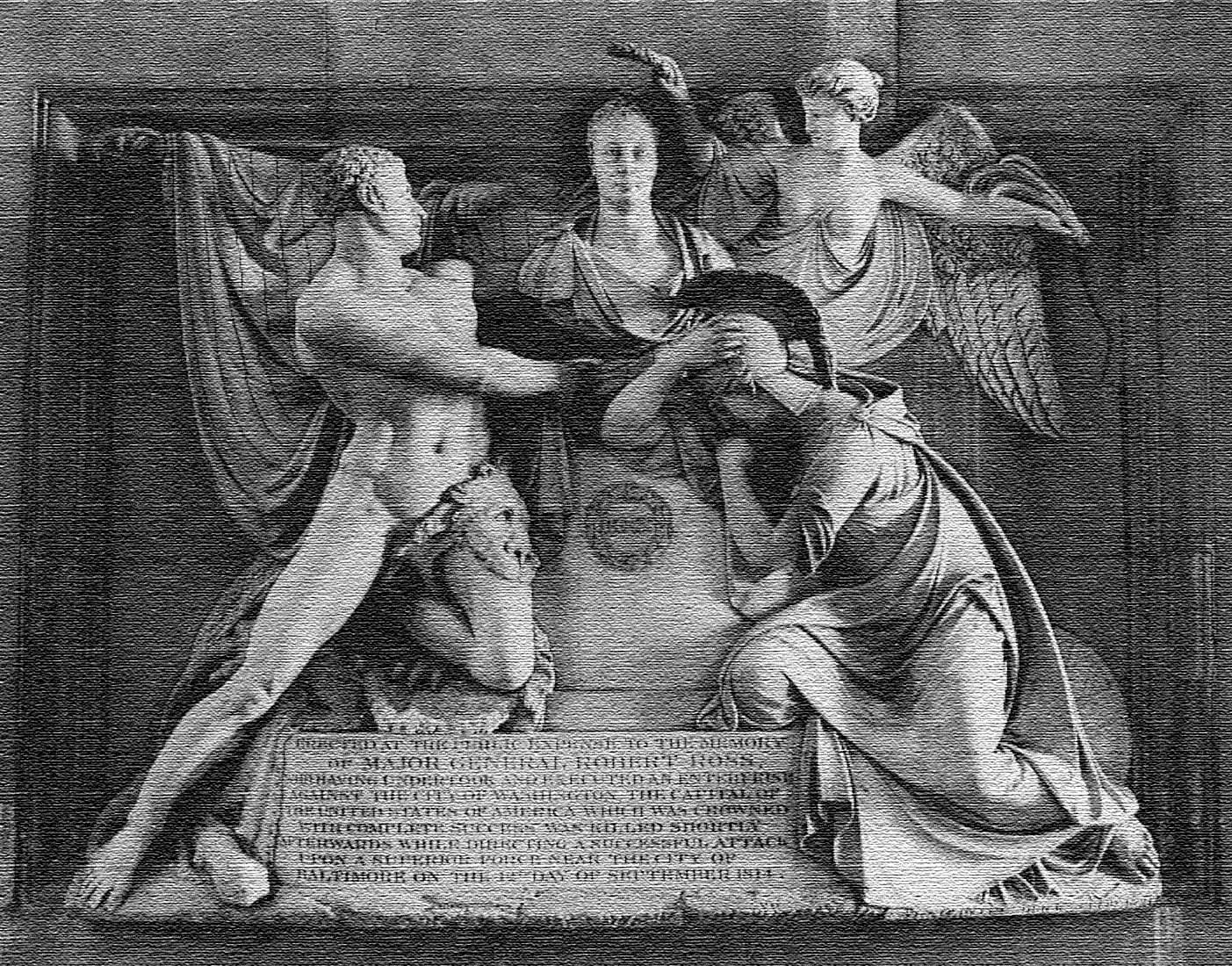
Captain Robert Falcon Scott CVO (1868 –1912) was a Royal Navy officer and explorer who led two expeditions to the Antarctic regions: the Discovery expedition of 1901–1904 and the ill-fated Terra Nova expedition of 1910–1913. On the first expedition, he set a new southern record by marching to latitude 82°S and discovered the Antarctic Plateau, on which the South Pole is located. On the second venture, Scott led a party of five which reached the South Pole on 17 January 1912, less than five weeks after Amundsen’s South Pole expedition. A planned meeting with supporting dog teams from the base camp failed, and Scott and his companions died. • Major-General Robert Ross (1766 – 12 September 1814) was an Irish-born officer in the British Army who served in the Napoleonic Wars and its theatre in North America in the War of 1812. [Photo Credits: (Left) The Victorian Web; (Right) Adapted from The Courtauld Institute of Art]
S3. JOHN THOMAS JONES VW AMT
Major General Sir John Thomas Jones, 1st Baronet KCB (25 March 1783 – 26 February 1843) was a British officer in the Royal Engineers who played a leading engineering role in a number of European campaigns of the early nineteenth century. Jones was revered by the Duke of Wellington and asked to advise on fortifications including the modernisation of the defences in Gibraltar. He was also notable as an English amateur cricketer who made six first-class appearances. This statue stands at the South end of the East wall of the East aisle, and we can see past it to the Howe monument which we will look at later. [Left Photo Credit: The Victorian Web]
S4. CADOGAN AND LAWRENCE MEMORIALS IOA W
There are two items of interest on the West side of the East aisle. The first is a relief by Francis Legatt Chantrey of Henry Cadogan, Viscount Chelsea, DL (1868 –1908). He was a British Army officer, civil servant and politician. This Viscount Chelsea (the title is a courtesy title) was a Conservative Member of the House of Commons (MP) elected twice to the seat of Bury St Edmunds. He was previously a captain in the 3rd Battalion of the Royal Fusiliers and a civil servant to the Prime Minister. • The statue just South of the central niche is of Brigadier-General Sir Henry Montgomery Lawrence KCB (1806 – 1857), who was a British military officer, surveyor, administrator and statesman in British India. He is best known for leading a group of administrators in the Punjab affectionately known as Henry Lawrence’s “Young Men”, as the founder of the Lawrence Military Asylums and for his death at the Siege of Lucknow during the Indian Rebellion. [Photo Credits: (Top) Adapted from The Courtauld Institute of Art ); (Bottom) Wikipedia]
S5. CORNWALLIS MONUMENT fb
We move across to the central ‘nave’ aisle where there is a single monument – the Cornwallis monument. In passing, in this first view we notice two small figures in the background, tucked up against the large South transept doorway. Charles Cornwallis, 1st Marquess Cornwallis, KG, PC (1738 – 1805), was a British Army general and official. In the United States and the United Kingdom he is best remembered as one of the leading British generals in the American War of Independence. His surrender in 1781 to a combined American and French force at the siege of Yorktown ended significant hostilities in North America. He later served as a civil and military governor in Ireland, where he helped bring about the Act of Union; and in India, where he helped enact the Cornwallis Code and the Permanent Settlement. [Left Photo Credit: ‘fisherbray’]
S6. NELSON MONUMENT IS RH
Opposite the Cornwallis monument we find the famous Nelson monument. Flaxman designed this monument to Lord Nelson around the themes of bravery and patriotism. Nelson was such a revered figure that since his death around 33 monuments have been commissioned in his memory worldwide. Flaxman uses symbolism to link various themes such as a British Lion and the figure of Britannia, which link Nelson to a sense of nationality which many of his admirers believed he embodied. [Photo Credits: (Left) Ian Stubbs; (Right) Rex Harris]
S7. PACKENHAM AND GIBBS; GILLESPIE AMT IOA
As we noticed in S5, statues stand on either side of the large South doorway. To the left stand Major General the Hon Sir E. Packenham and Major General S Gibbs who died in the War of 1812–1815 between Britain and the United States, while leading their troops in an attack of the enemy. • To the right is a statue of Major-General Sir Hugh Robert Rollo Gillespie KCB (1766 – 1814) who was an officer in the British Army. The Army’s historian Sir John Fortescue called him “The bravest man ever to wear a red coat”. He died in the Anglo-Nepalese War 0f 1814. [Photo Credits: (Left) The Victorian Web; (Right) Adapted from Courtauld I of A]
S8. LYONS STATUE W SPC
We next move to the West aisle, where there is a single monument – a statue of Admiral Edmund Lyons, 1st Baron Lyons, GCB, GCMG, KCH (1790 –1858). Lyons was an eminent British Admiral of the Royal Navy, and an eminent British diplomat, who was responsible for encouraging the Crimean War, during which he was Commander-in-Chief of the Mediterranean Fleet, and for securing the subsequent allied victory in the conflict, through his efforts at the Siege of Sevastopol (1854–1855) with both the Navy and the British Army. [Photo Credits: Wikipedia; St Paul’s Cathedral]
S9. TO THE SOUTHERN AISLE AND TURNER AMT VW
It is now time to investigate the wide Southern aisle. In this view we admire once more the extensive detailing of the friezes and wall panels. Standing at left is the famous painter Joseph Turner. Joseph Mallord William Turner RA (1775 –1851), known in his time as William Turner, was an English Romantic painter, printmaker and watercolourist. He is known for his expressive colourisations, imaginative landscapes and turbulent, often violent marine paintings. He left behind more than 550 oil paintings, 2,000 watercolours, and 30,000 works on paper. He was championed by the leading English art critic John Ruskin from 1840, and is today regarded as having elevated landscape painting to an eminence rivalling history painting. [Photo2 Credit: The Victorian Web]
S10. SOUTHEASTERN VIEW AMT
Here is a view of the Southeastern corner of the aisle. Beyond the statue of Turner, there is an interesting monument.
S11. COLLINGWOOD MEMORIAL AMT
Vice Admiral Cuthbert Collingwood, 1st Baron Collingwood (1748 –1810) was an admiral of the Royal Navy, notable as a partner with Lord Nelson in several of the British victories of the Napoleonic Wars, and frequently as Nelson’s successor in commands.
S12. EAST END OF TRANSEPT AMT
In this view looking East along the South aisle, we just see the Collingwood Monument at right, extending beyond the South Doorway. Straight before us is the Howe monument, and at left the Elliot statue.
S13. HOWE MONUMENT AMT AMT
Richard Howe, Earl Howe, also called 4th Viscount Howe, or Viscount Howe of Langar, (1726—1799), was a British admiral who commanded the Channel fleet at the Battle of the First of June (1794) during the French Revolutionary Wars.
S14. HOSTE AND ELLIOT STATUES AMT W
Standing at the Southern ends of the North-South dividing walls we find these two statues. Captain Sir William Hoste, 1st Baronet KCB RN (26 August 1780 – 6 December 1828), Royal Navy captain. Best known as one of Lord Nelson’s protégés, Hoste was one of the great frigate captains of the Napoleonic wars, taking part in six major actions including the capture of the heavily fortified port of Kotor. He was, however, absent from Trafalgar having been sent with gifts to the Dey of Algiers. • George Augustus Eliott, 1st Baron Heathfield, KB, PC (25 December 1717 – 6 July 1790) was a British Army officer who served in three major wars during the eighteenth century. He rose to distinction during the Seven Years' War when he fought in Germany and participated in the British attacks on Belle Île (France) and Cuba. Eliott is most notable for his command of the Gibraltar garrison during the Great Siege of Gibraltar, which lasted from 1779 and 1783, during the American War of Independence. He was celebrated for his successful defence of the fortress and decisive defeat of Spanish and French attackers. [Picture Credits: (Left) Chasing Nelson Blog; (Right) Wikimedia]
S15. MOORE MONUMENT AMT
Our final two monuments in the South transept are in the Southwest corner. The Moore Monument is on the South wall. Lieutenant-General Sir John Moore, KB (1761 –1809) was a British Army general, also known as Moore of Corunna. He is best known for his military training reforms and for his death at the Battle of Corunna, in which he repulsed a French army under Marshal Soult during the Peninsular War. After the war General Sarrazin wrote a French history of the battle, which nonetheless may have been written in light of subsequent events, stating that “Whatever Buonaparte may assert, Soult was most certainly repulsed at Corunna; and the English gained a defensive victory, though dearly purchased with the loss of their brave general Moore, who was alike distinguished for his private virtues, and his military talents.”
S16. ABERCROMBIE MEMORIAL VW
Our final memorial here is the Abercrombie Memorial, set back in a semi-circular recess. Sir Ralph Abercromby KB (sometimes spelt Abercrombie) (1734 – 1801) was a Scottish soldier and politician. He twice served as MP for Clackmannanshire, rose to the rank of lieutenant-general in the British Army, was appointed Governor of Trinidad, served as Commander-in-Chief, Ireland, and was noted for his services during the French Revolutionary Wars. This completes our exploration of the South transept. [Photo Credit: The Victorian Web]
We now descend the 37 steps leading from the East aisle of the transept, to explore the crypt.


